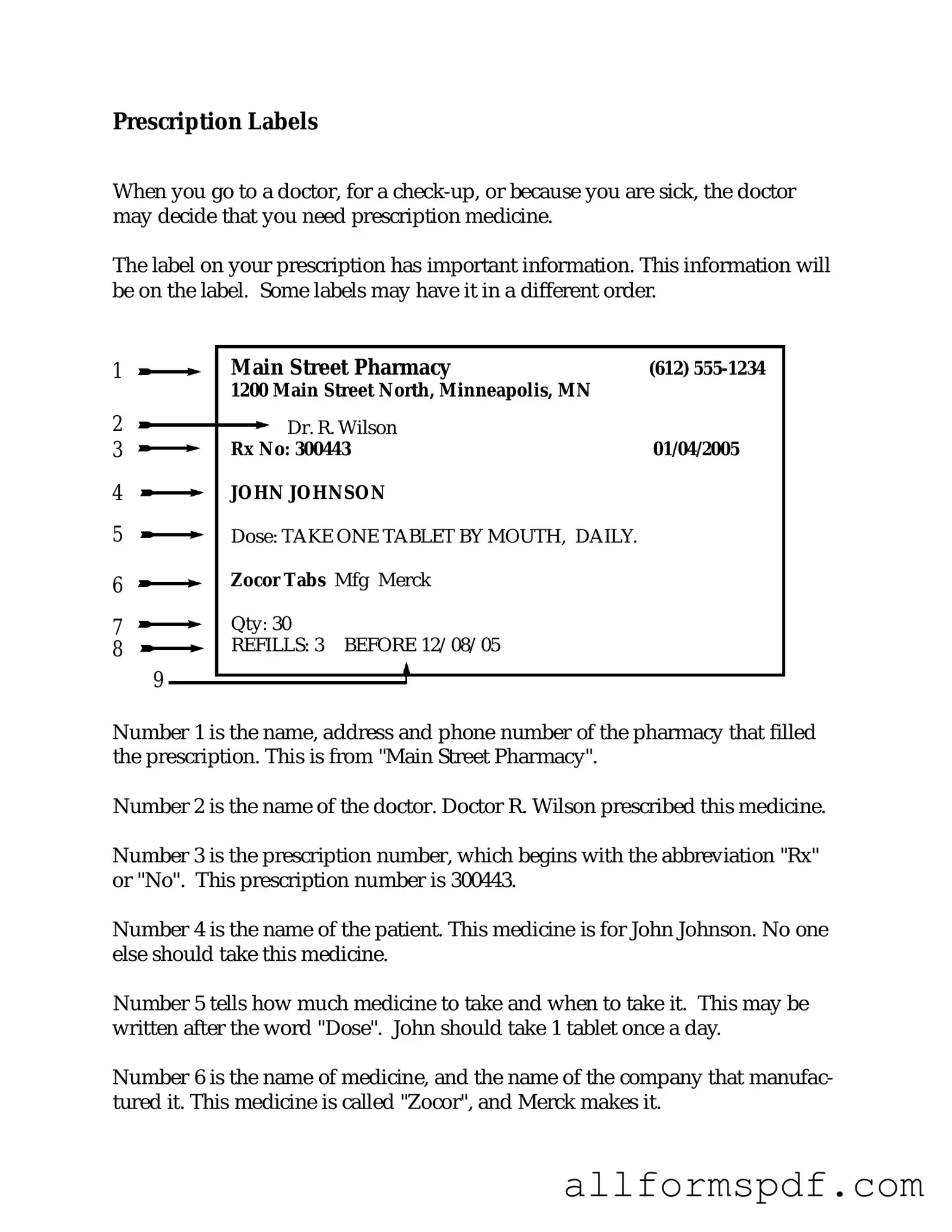Filling out a Prescription Label form can seem straightforward, but many individuals make common mistakes that can lead to confusion or even potential health risks. One frequent error is providing incorrect patient information. This may include misspelling the patient's name or entering the wrong date of birth. Such inaccuracies can cause delays in processing prescriptions or result in medication being dispensed to the wrong person.
Another common mistake is neglecting to include the prescribing physician’s details. Omitting the doctor’s name or contact information can complicate matters if the pharmacy needs to verify the prescription. Additionally, failing to specify the correct dosage or frequency of the medication can lead to serious health consequences. Clear instructions are essential for ensuring that the patient takes the medication safely and effectively.
Many people also forget to indicate the quantity of medication needed. This oversight can lead to a prescription being filled for too few or too many doses, which can disrupt treatment plans. Similarly, not noting any allergies or interactions with other medications is a critical mistake. This information is vital for pharmacists to provide safe medication options.
Another mistake occurs when individuals do not sign or date the form. A missing signature can render the prescription invalid, preventing the patient from obtaining their medication. Furthermore, using outdated or incorrect forms can create confusion. Always ensure that the most current version of the Prescription Label form is used to avoid any issues.
Some people also fail to check for legibility. If handwriting is unclear, pharmacists may misinterpret the prescription, leading to dispensing errors. In addition, not reviewing the completed form for errors before submission can result in overlooked mistakes. Taking a moment to double-check the information can save time and prevent complications.
Lastly, individuals may overlook the importance of providing insurance information. Without this, patients might face higher out-of-pocket costs or delays in processing their prescriptions. By being aware of these common pitfalls, individuals can ensure that their Prescription Label form is filled out accurately, ultimately leading to better health outcomes.
